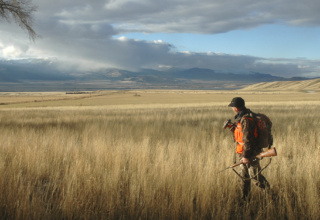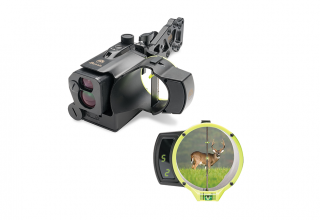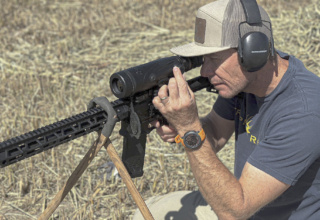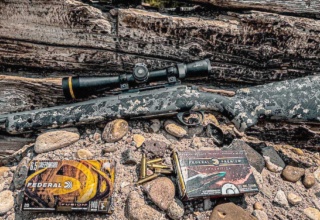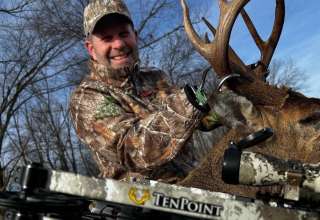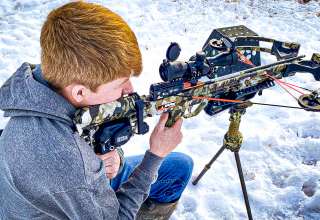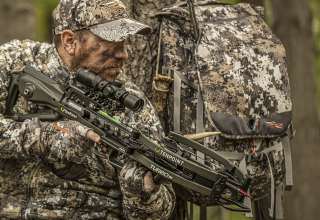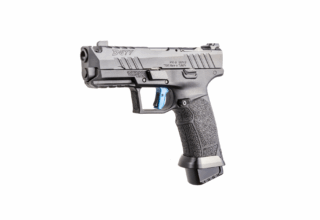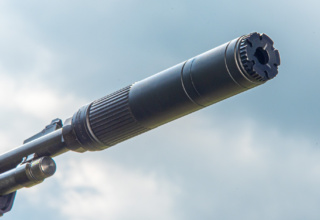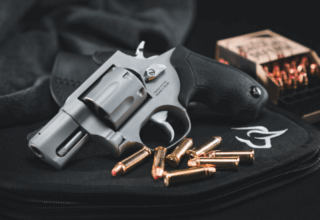The time is now! Develop that routine, stick to it, make it real, and know your gear inside and out.
by Jace Bauserman
With each passing day, bow season draws closer. Those that harbor a tag for pronghorn, mule deer, or elk could kick things off as early as mid-August. Whitetail goers, in many states, can start taking to the trees as early as September 1. The point? The window of opportunity to develop your shooting routine, boost muscle memory, tinker with gear and the like is shrinking. Make the most of every single day.
Make It Real
It can get monotonous, pounding dots on foam, so switch it up. One of the best ways to prepare for an in-the-woods opportunity is to simulate that opportunity with a 3-D target or two. Not every animal is going to give you a perfect broadside shot, so it’s important to set your 3-D targets at various angles and practice at those angles regularly. Angles should include: slightly quartering away, quartering away, slightly quartering to, quartering to, and full frontal. Don’t tar and feather me just yet. I note quartering to and full frontal for multiple reasons. First, I’ve killed elk at distances inside 30 yards with a full-frontal shot. If you’re hunting solo, a bull will typically come to the call head-on, and if you can put your arrow into the thoracic opening, you’re going to take out throngs of arteries as well as a number of vital organs. It’s a devastating shot. To find the thoracic opening, take note of the lump on the elk’s sternum where the coloring of the hide changes from light to dark. The opening you want to hit is eight inches above the sternum. Put a broadhead in the opening and the bull will expire in seconds.
When it comes to quartering-to shots, I’ve found pronghorn often approach a tank or pond and offer this angle. They seem to keep an eye on the blind while they drink but will typically open a front shoulder just enough. Pronghorn are lighter-boned critters, and as long as you don’t hit the point of the shoulder, your shot will be lethal.
It’s important to practice all the above-mentioned angles regularly. You want to know you can hit the spot, and foam simulation, especially with a broadhead-tipped arrow, will show you the path that arrow will carve inside the animal.
NOTE: Quartering-to and full-frontal shots should only be taken at ranges inside 30 yards. In addition to knowing you can make the shot, you need to be able to judge the body language of the animal as well.
Body Position
As well as shooting at various angles, you’ll also want to practice slinging carbon from several different body positions. Spend time shooting from your knees, flat on your butt with your legs together and extended out, and from a single knee. You need to be prepared for any scenario. It’s also important to practice shooting at up and downhill targets. You’ll need to learn to draw and then bend at the waist. Again, this can only be learned through practice.
Those that hunt 20-feet up need to hang a treestand and practice shots both near and far. One I highly recommend mastering is the right-under-your-stand shot. This is a close-range shot that is extremely difficult. The more you practice, the more confidence you’ll have during crunch time.
Know Thy Head
I know they’re a bit pricy, but it’s essential to practice with the broadhead you plan to fill your quiver with. Yes, even if it’s a mechanical. Not all broadheads fly like field points. Fixed-blade heads are going to create additional air resistance, as will hybrid-style heads. Mechanicals will often have a longer ferrule than a field point. In bowhunting, it’s the small things that make all the difference and you want to leave nothing to chance.
My advice: Bite the bullet and purchase a pack of broadheads to be used only for practice. Be sure to test the heads to the maximum distance you plan to take an animal. I see lots of bowhunters practice with their broadhead of choice at distances of 20 and 30 yards and then call it good. This is a mistake. If you know a 60-yard shot is possible, you better know what your broadhead/arrow combo will do at this distance.
A Do-All Head
Don’t be a broadhead hopper, especially right now. Decide on the head you’re going with and, unless practice sessions and testing unveil a major flaw, stick with it. Every time you change heads, you’ll need to sight-in and possibly re-tune. A solid, do-all option — one that will work on any game you plan to pursue — is NAP’s DK4.
A hybrid-style head, the DK4 is fitted with a pivot-around-bone main blade that remains in the fixed position as well as a pair of bleeder blades that deploy as the broadhead pushes through the animal. The aluminum ferrule is durable and with no O-rings, collars, or rubber bands, you can simply thread them onto your shaft and go. I tested the DK4 at distances from 10 to 90 yards and its flight performance and durability heed the bowhunting call. The DK4 is offered in 100- and 125-grain options.
Get After It
The more time you spend preparing in the coming weeks, the more successful your season will be. Know your equipment inside and out and develop a stick-to-it shooting routine that will fill you with confidence and ensure a short red-carpet blood trail when the time comes.
A Rest to Consider
Much as we try to practice for real-world scenarios, sometimes our equipment doesn’t always facilitate unconventional shooting positions. We’ve all experienced issues with our arrow/arrow rest interface at some point. The new Surge rest from Apex Gear helps keep your arrow securely in place and ready for the shot regardless of the angles or contortions you may face.
The Surge features a launcher designed with a deep valley that puts a stop to the side-to-side arrow movement we often encounter. More importantly, you can click the launcher up into its shooting position, so there is no upward movement during the draw and the arrow stays nestled in the fully contained rest until you’re ready to take the shot. Upon release, the launcher delivers a steady drop to reduce bounce yet is precision-timed to clear the fletching. This delayed trigger keeps the arrow supported longer for improved accuracy. The new Surge is available in left- or right-hand models and is easy to set up.







